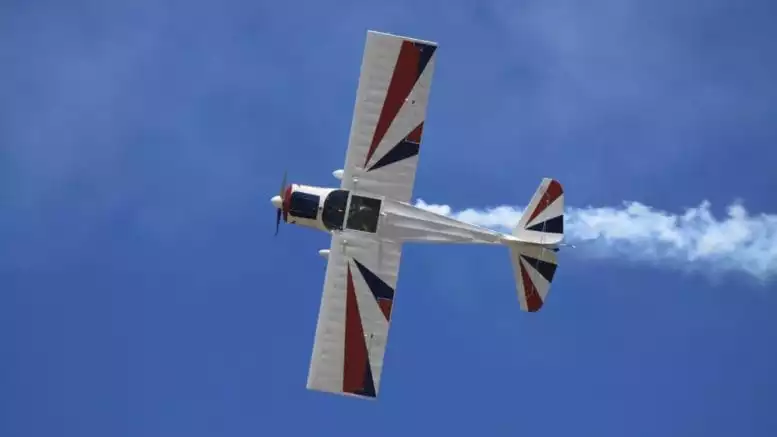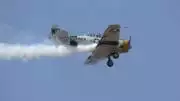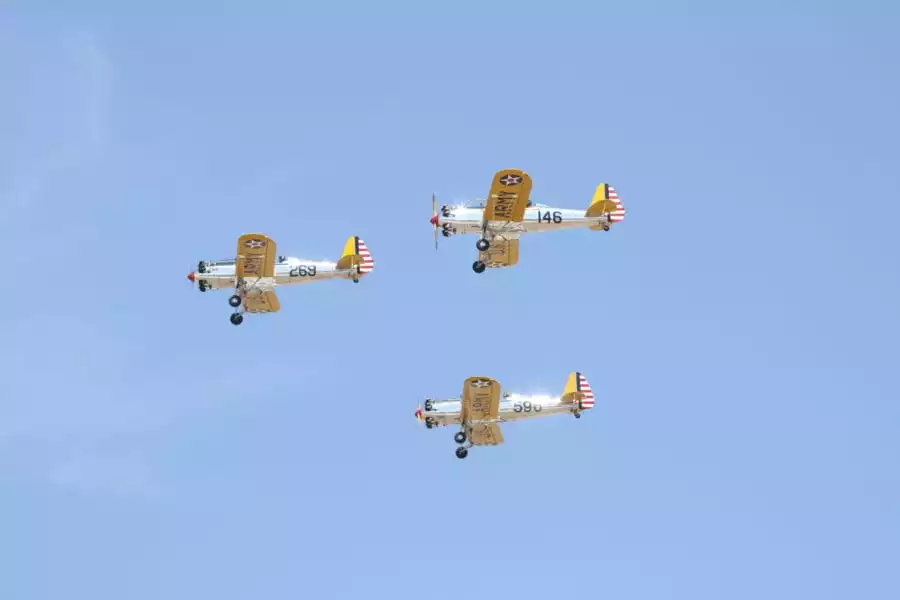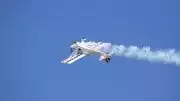The Altimeter and Its Important Role in Air Shows
As far as aircraft instruments go, the altimeter is probably one of the most important. Especially during airshows!
When traveling at speed (and sometimes inverted), the pilot needs to know how far from the ground he is… At ALL times! Today, we will look at how an altimeter works, things that may affect it, and why it is vital.
What is an Altimeter?
In the simplest terms, an altimeter is an instrument with a reading in the cockpit that tells the pilot how high the aircraft is above a given level.
Did you notice something?
We didn’t say ‘above the ground’ as this is not always true. The ‘level’ that we use to measure altitude or height varies. The name for this level is a ‘datum’.
The datum can be set to read zero at ground level, for sure… But if you live near hills or mountains, you’ll already know that ‘ground level’ is not always a constant.
Suppose an airplane flies a long distance over various terrain. In that case, it is often better to set the altimeter to a different, more consistent datum…
In this case, aviators will often use an altitude above Sea level and work out their terrain clearance based on charts and maps that tell them how high the terrain is above sea level.
For more local work, airplanes’ height should be referenced to the field over which it will be flying.
How do Altimeters Work?
Here’s an interesting fact.
While you may think an altimeter measures height, it, in fact, measures air pressure!
An altimeter is actually a calibrated barometer. As an airplane climbs, the air becomes less dense. If we know the air density at ground level and know that it gets less dense as we climb, we can measure the difference and work out how high we are.
This is exactly what an altimeter does and displays this number as a height normally given in feet.
The altimeter contains a tiny device that looks a little like a squeezebox. This is sealed and filled with air. If the air outside is less dense, this box expands. As the air density increases in a descent, this box contracts. With a few intricate cogs and gears, the amount of expansion and contraction can be measured, displaying a given altitude.
If you are interested in the science behind it, check this article out, there’s a really great diagram!
If that is a little heavy going, here’s a really simple animation that shows how it works
Altimeter Sensors | Explained
The main sensor used by the altimeter is called the ‘Pitot Static System’. This is a series of inlets fitted on the aircraft to allow the outside air to flow into the various cockpit instruments.
If you look at an airplane, you’ll see a few ports and sensors on the fuselage. The pitot tubes (which are more to do with airspeed) are little forward-facing tubes, normally located on the underside.
The static system is normally found on the sides of airplanes. It looks like a small metal square with tiny holes arranged in the center. These allow air to flow into the altimeter
How Accurate are Altimeters?
Altimeters are pretty accurate. Normally to within around 10 feet!
Most have three needles that indicate different numbers. Depending on their size, they equal thousands of feet, hundreds of feet, or tens of feet!
For this reading to be accurate, the altimeter must be calibrated to give a height reading above a certain datum. If we don’t tell it what to count as ‘zero’, we don’t have a baseline to measure against.
If you ever watch an airshow and get to listen to a VHF radio, you’ll hear the pilots and air traffic controllers use terms such as ‘QNH’ and ‘QFE’. These are both altimeter settings to ensure that an airplane’s altimeter is correctly calibrated.
What’s the difference between QNH and QNE?
It’s simple: –
- QNH is used to give an altitude reading above sea level
- QFE is used to give a height above the airfield
Things that Might Affect an Altimeter
Like all tools, when used properly, the altimeter is great. But numerous things can affect its accuracy: –
Temperature. When manufactured, altimeters are calibrated to work most effectively at 15°C (50°F).
However…
The air pressure changes when climbing and descending can vary from day to day depending on the air temperature. On really cold days, the airplane’s actual height and what the altimeter reads can be quite different, likewise with very warm days.
Incorrect Setting
As we said, an altimeter must be calibrated on the surface to give a true reading. This is a vital part of a pilot’s checklist. Getting it wrong could lead to the altimeter giving incorrect information.
It even happens to the big jets! Listen to this!
Altimeter Faults
Like all mechanical equipment, altimeters can develop faults. The needles can stick. This is often called ‘stiction’. To get around this, manufacturers fit a device that gently vibrates the altimeter to stop it from sticking.
Also, blockages in the system can prevent air from reaching the altimeter. To guard against this, it is part of a pilot’s pre-flight checks to inspect the static ports.
Aerobatics
Aerobatic aircraft are subject to forces that don’t affect ‘normal’ aircraft.
How?
They can tumble and end up flying sideways!
Here’s a Pitt’s special doing a ‘Lomcevak.’
Pretty cool!
This forces air into the static ports causing a sudden increase in the air pressure inside the altimeter! This will cause the altimeter to give a momentary false reading.
Why is an Altimeter Important for Airshows?
To guard against any of the above becoming an issue, airshow pilots don’t perform any maneuver unless they are a certain height above the ground.
They are also well-practiced in flying maneuvers visually, relying on what they can see ‘out of the window’ as much as the instruments!
You’ll sometimes hear this referred to as the aerobatic box. It’s particularly relevant at air shows as it keeps both the pilots and those watching on the ground safe. Pilots check their altitude and are given the latest altimeter calibration setting before they begin any aerobatics.
If you want to see a real-life ‘Lomcevak’ or high-performance airplanes being put through their paces (along with their altimeters), why not check to see if there is an airshow taking place soon?
Ready to Soar with Us?






